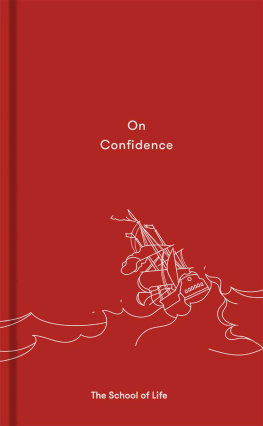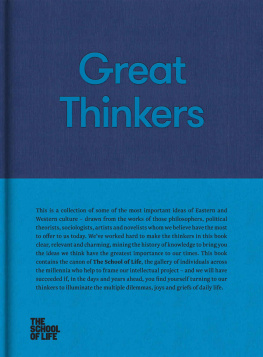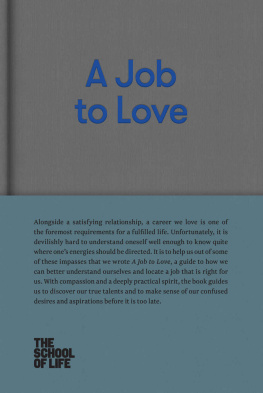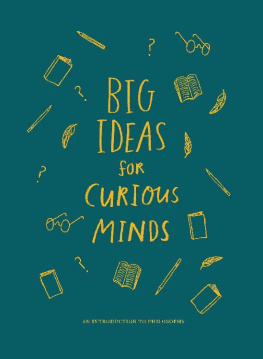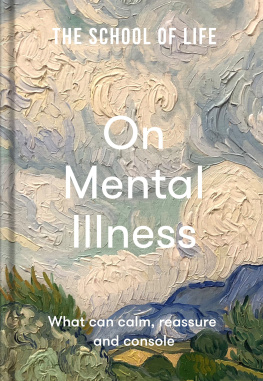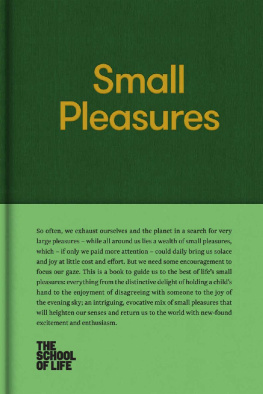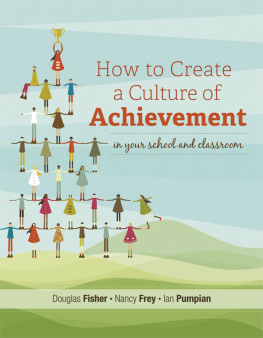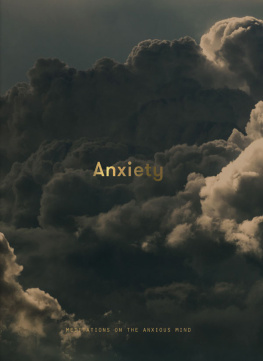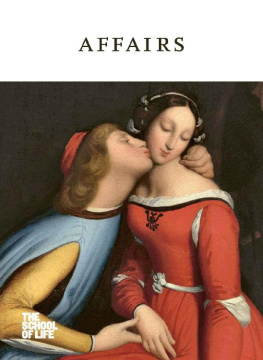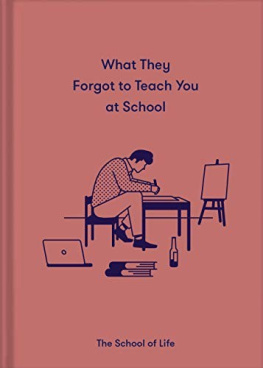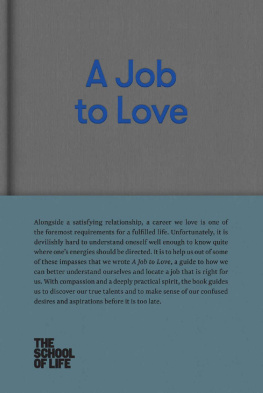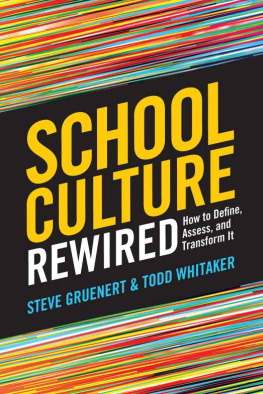The School of Life - What is Culture For?
Here you can read online The School of Life - What is Culture For? full text of the book (entire story) in english for free. Download pdf and epub, get meaning, cover and reviews about this ebook. year: 2018, publisher: The School of Life Press, genre: Religion. Description of the work, (preface) as well as reviews are available. Best literature library LitArk.com created for fans of good reading and offers a wide selection of genres:
Romance novel
Science fiction
Adventure
Detective
Science
History
Home and family
Prose
Art
Politics
Computer
Non-fiction
Religion
Business
Children
Humor
Choose a favorite category and find really read worthwhile books. Enjoy immersion in the world of imagination, feel the emotions of the characters or learn something new for yourself, make an fascinating discovery.
- Book:What is Culture For?
- Author:
- Publisher:The School of Life Press
- Genre:
- Year:2018
- Rating:4 / 5
- Favourites:Add to favourites
- Your mark:
- 80
- 1
- 2
- 3
- 4
- 5
What is Culture For?: summary, description and annotation
We offer to read an annotation, description, summary or preface (depends on what the author of the book "What is Culture For?" wrote himself). If you haven't found the necessary information about the book — write in the comments, we will try to find it.
What is Culture For? — read online for free the complete book (whole text) full work
Below is the text of the book, divided by pages. System saving the place of the last page read, allows you to conveniently read the book "What is Culture For?" online for free, without having to search again every time where you left off. Put a bookmark, and you can go to the page where you finished reading at any time.
Font size:
Interval:
Bookmark:
What Is Culture For?
What Is Culture For?
The School of Life
Published in 2018 by The School of Life
70 Marchmont Street, London WC1N 1AB
Copyright The School of Life 2018
Printed in Latvia by Livonia Print
All rights reserved. This book is sold subject to the condition that it shall not be resold, lent, hired out or otherwise circulated without express prior consent of the publisher.
A proportion of this book has appeared online at thebookoflife.org
Every effort has been made to contact the copyright holders of the material reproduced in this book. If any have been inadvertently overlooked, the publisher will be pleased to make restitution at the earliest opportunity.
The School of Life offers programmes, publications and services to assist modern individuals in their quest to live more engaged and meaningful lives. Weve also developed a collection of content-rich, design-led retail products to promote useful insights and ideas from culture.
www.theschooloflife.com
ISBN 978-1-9999179-4-4
Our societies frequently proclaim their enormous esteem for culture and the arts. Music, film, literature, painting, photography and sculpture enjoy superlative prestige and are viewed by many as close to the meaning of life.
But our societies also have a strict sense of what properly appreciating the arts should involve. Sensible homage is associated with acquiring technical knowledge, with taking advanced qualifications in the humanities, with knowing historical details and with respecting, at least in substantial part, the canon as it is now defined.
Strangely, what we are not generally encouraged to do and indeed what we might be actively dissuaded from attempting is to connect works of culture with the agonies and aspirations of our own lives. It is quickly deemed vulgar, even repugnant, to seek personal solace, encouragement, enlightenment or hope from high culture. We are not, especially if we are serious, meant to view cultural encounters as opportunities for didactic instruction.
In Ben Lerners 2011 novel Leaving the Atocha Station, an American PhD student, used to considering art as material for academic analyses and scholarly seminars, visits Madrids Prado museum. In one of the quieter rooms he spots a fellow visitor who moves slowly, looking intently at a range of key works, including Rogier van der Weydens The Descent from the Cross (before 1443), Paolo de San Leocadios Christ the Saviour (14824) and Hieronymus Boschs The Garden of Earthly Delights (14901500).

What might it be right to do in front of this?
Rogier van der Weyden,
The Descent from the Cross,
before 1443
What astonishes the graduate student and eventually the guards of the museum is that in front of each of these masterpieces, the visitor doesnt merely politely look at the caption or the guidebook; he doesnt just note the fine brushstrokes and the azure of the skies. He bursts into tears and cries openly at the sorrow and beauty on display, at the contrast between the difficulties of his own life and the spirit of dignity and nobility of the works on the wall. Such an outburst of intense emotion is deeply unusual in a museum (museums may routinely be referred to as our secular cathedrals, but they are not as cathedrals once were intended to be places to reveal our grief and gratitude). Listening to the mans sobs, the guards at the Prado grow understandably confused and nervous. As the author puts it, they cannot decide whether the man was:
perhaps the kind of man who would damage a painting, spit on it or tear it from the wall or scratch it with a key or if the man was having a profound experience of art What is a museum guard to do? On the one hand, you are a member of a security force charged with protecting priceless materials from the crazed on the other handif your position has any prestige it derives precisely from the belief that [great art] could legitimately move a man to tears Should [the guards] ask the man to step into the hall and attempt to ascertain his mental state or should they risk letting this potential lunatic loose among the treasures of their culture?
The dilemma points with dry humour to the paradox of our contemporary engagement with culture: on the one hand, we insist on cultures importance. On the other, we limit what we are meant to do with culture to a relatively polite, restrained and principally academic relationship, at points frowning on those who might treat it more viscerally and emotionally, as if it might be a sophisticated branch of the notorious category self-help.
This resistance, however well meant, nevertheless fails to notice that the great works of culture were almost invariably created to redeem, console and save the souls of their audiences. They were made, in one way or another, with the idea of changing lives. It is a particular quirk of modern aesthetics to sideline or ignore this powerful underlying ambition, to the point where to shed tears in front of a painting depicting the death of the son of God may put us at risk of ejection from a national museum.
Yet the power of culture arguably best emerges not when we conceive of it as an object of critical study or historical curiosity, but when we rely on it as a therapeutic tool that can be used in a quest to grow somewhat less isolated, frightened, shamed, restricted or skittish. Rather than focus on what a work of art might tell us about the time and place it was made or about the person who created it, we should develop the confidence to do exactly that which we might feel discouraged to do: relate cultural masterpieces to our own dilemmas and pains, using them as a resource with which to address a range of our most debilitating and pernicious agonies.

The greatest share of art that humans have ever made for one another has had one thing in common: it has dealt, in one form or another, with sorrow. Unhappy love, poverty, discrimination, anxiety, sexual humiliation, rivalry, regret, shame, isolation and longing; these have been the chief constituents of art down the ages.
However, we are, in public discussion, often unhelpfully coy about the extent of our grief. The chat tends to be upbeat or glib; we are under awesome pressure to keep smiling in order not to shock, provide ammunition for enemies or sap the energy of the vulnerable.
We thereby end up not only sad, but sad that we are sad without much public confirmation of the essential normality of our melancholy. We grow harmfully stoic or convinced of the desperate uniqueness of our fate.
All this, culture can correct standing as a record of the tears of humanity, lending legitimacy to despair and replaying our miseries back to us with dignity, shorn of many of their haphazard or trivial particulars. A book [though the same could be said of any art form] must be the axe for the frozen sea within us, proposed Kafka in a 1904 letter to his friend Oskar Pollak. In other words, a tool that can help release us from our numbness and provide catharsis in areas where we have for too long been wrong-headedly brave.
There is relief from our submerged sorrows to be found in all of historys great pessimists. For example, in the words of Seneca from his On Consolation to Marcia (c. 40 AD):
What need is there to weep over parts of life? The whole of it calls for tears.
Or the ironic maxims of Schopenhauer in
Next pageFont size:
Interval:
Bookmark:
Similar books «What is Culture For?»
Look at similar books to What is Culture For?. We have selected literature similar in name and meaning in the hope of providing readers with more options to find new, interesting, not yet read works.
Discussion, reviews of the book What is Culture For? and just readers' own opinions. Leave your comments, write what you think about the work, its meaning or the main characters. Specify what exactly you liked and what you didn't like, and why you think so.


